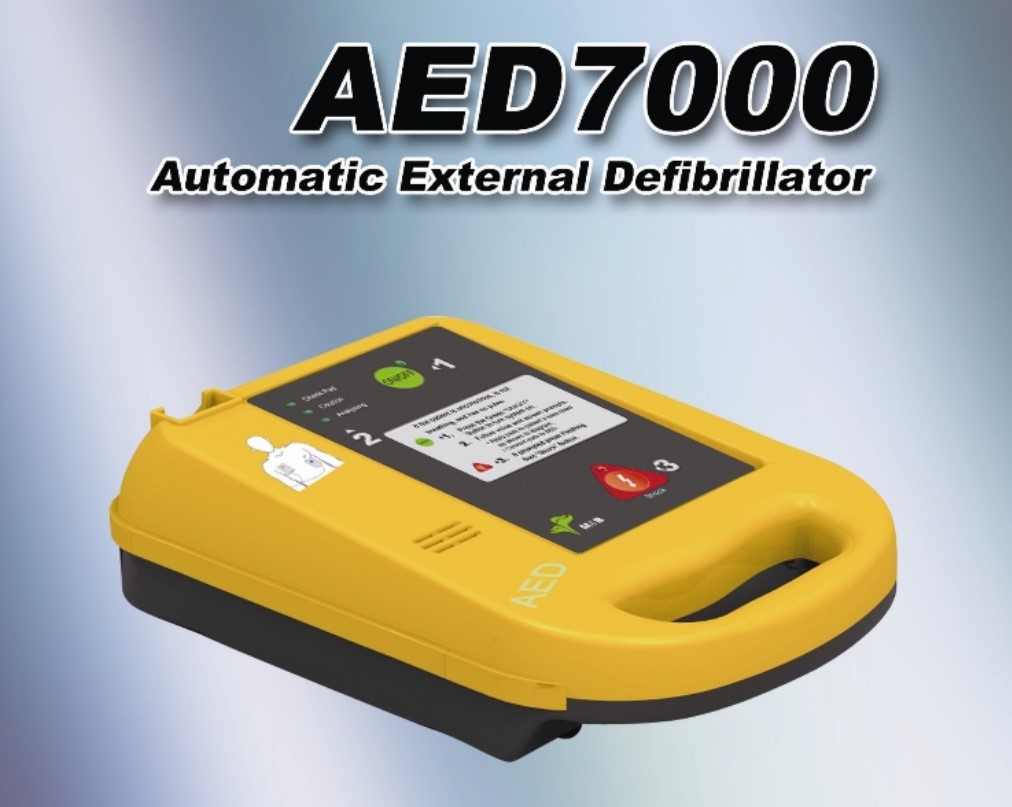Specifications:
- Three-step defibrillation process
- Tow-button operation
- Extensive voice and visual prompts for the operator
- Biphasic energy output
- lock-out protection to prevent inadvertent defibrillation

Defibrillator
| Category | Specification |
| output | Biphasic Truncated exponential |
| Energy sequence Charge Time | 150, 150, 200j 8 sec. to 150j 10 sec. to 200j (New battery) |
| analysis Time | 9 sec. |
| The maximum time from the initiation of rhythm analysis to readiness for discharge with a new battery | less than 30seconds |
| The maximum time from the initiation of rhythm analysis to readiness for discharge after 6 shocks. | less than 35seconds |
| The maximum time from the initiation switching power on to readiness for discharge. audible prompts | less than 25 seconds 20audible prompts |
| visual prompts | LED prompts |
| controls | Two buttond – On/Off,Shock |
| Output Energy Accuracy | ±15% intoany impedance from 25 to 175 |
| Out disabled when the patient impedance is outsidw | 20 to 20 |
| Part No Non-rechargeable | CR1234A-4×2 12V d.c. 3.0Ah |
| Capacity | 100 disccharges at200 joules or 120 discharges at150 joules |
| Shelf Life (25 C±15 C) | 10 years (5 years storage+5 years standby) 5 years standby (after installation) |
| Dimensions Weight Operating Temperature Operating humidity | 303*216*89mm 2.0 kg 0 Cto 40 C Relative humidity between 30% and 95% (non- condensing) |
| Storage Temperature (without battery) | -20C to 55C |
| Storage Humiditry (without battery) | Up 93% (non-condensing) |